How to properly wash a post-operative bandage?
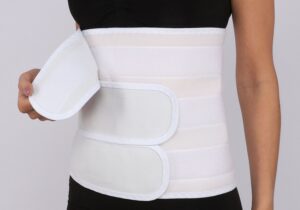 A compression bandage-fixator is necessary after surgical interventions, as well as during orthopedic treatment, pregnancy and after childbirth. It is fixed on the problem area of the body, and there is often direct contact with the skin - as a result, the product quickly gets dirty. You can wash a postoperative bandage made of synthetics and metal plates both by hand and in the washing machine. But you need to do it correctly so as not to lose the healing properties of the frame.
A compression bandage-fixator is necessary after surgical interventions, as well as during orthopedic treatment, pregnancy and after childbirth. It is fixed on the problem area of the body, and there is often direct contact with the skin - as a result, the product quickly gets dirty. You can wash a postoperative bandage made of synthetics and metal plates both by hand and in the washing machine. But you need to do it correctly so as not to lose the healing properties of the frame.
Which bandage is washable and which is not?
From French “bandage” is translated as “bandage”. The bandage is an orthopedic product in the form of a belt with a frame. The retainer is made of elastic material and has several sewn-in inserts made of metal or hard plastic. It is due to the “skeleton” that it fixes a part of the body in a stationary position for medicinal or cosmetic purposes.
The bandage is sewn from an elastic fabric base and hard inserts.
Retainers vary in intended use, filling and shape. More common are belts for pregnant women and childbirth, as well as postoperative and orthopedic bandages.
- Belts for pregnant women. Necessary to protect the abdominal wall from stretching and reduce the load on the spine and lower back. As a rule, such bandages are made of breathable material with cotton fibers, which provides air conditioning and eliminates allergic reactions.
- Postoperative bandages. Used after surgery. They are distinguished by an elastic base and are sewn from durable and wear-resistant fabric: polyester with polypropylene.

- Orthopedic bandages.Their function is to fix a damaged ankle, knee or elbow. The stretchy cotton base with polyester blends provides just the right amount of support while allowing your skin to breathe.
It is recommended to wear any fixing product under clothing, especially a bandage for the abdominal cavity and lower back. Direct contact with the skin inevitably leads to contamination of the dressing, even if it is highly breathable. Experts recommend washing your belts every week. It remains to figure out how to do this safely.
Traditional washing method
Washing medical bandages is complicated by their design. In addition to the fabric base, the fasteners have additional elements: Velcro, hooks and stiffening ribs. Improper cleaning can damage the structure of the dressing and damage it irreparably.
It’s better not to take risks and choose the most delicate option – hand washing. The instructions are as follows:
- wipe off dust and dried dirt from the surface of the product;
- fasten all fasteners (if the product has Velcro or hooks);
- remove the stiffeners, tie the laces;
- fill the container with warm water (not higher than 30 degrees);

- foam the detergent in water;
- immerse the bandage in the resulting solution for 20-30 minutes;
- walk over the fabric with a soft brush, without bending or twisting it;
- rinse the product in cold water;
- do not squeeze, allowing the water to drain on its own;
- Dry in a ventilated area away from direct sunlight.
It is important to choose a detergent wisely. You need to navigate by the type of fabric at the base of the product. Neoprene and elastane headbands can be washed with soft gels designed for gentle washing. If there are wool fibers in the composition, preference is given to shampoo for wool and fluff. Cotton is cleaned with liquid soap.
To clean orthopedic products, it is prohibited to use aggressive bleaches, stain removers and concentrates with alkali. Abrasive components will damage the structure of the fibers, disrupt their breathability and elasticity. Regular washing powder, which does not dissolve well in cold water, is also prohibited.
You cannot boil, dry with hot air or steam the bandages. At high temperatures, the structure of the bandage is deformed, causing the fixing and shock-absorbing properties of the product to be lost. To speed up the drying of the belt, you should place it on a terry towel - it will absorb moisture.
Is it possible to use a machine?
Not all bandages can withstand washing in an automatic machine. It is allowed to load only products without rigid non-removable parts into the drum. It is also mandatory to comply with the following rules:
- the “Delicate” or “Synthetic” program is turned on;

- the temperature is set to 30 degrees;
- spin is turned off;
- the double rinse function is activated;
- the compression product is placed in a protective bag;
- Only liquid detergents are used (without bleaching components in the composition).
Gentle washing will not damage the bandage - the product will retain its healing properties in full. The main thing is to avoid intense friction, bleaching, spinning and artificial drying.
Interesting:
Reader comments
- Share your opinion - leave a comment
Categories
Washing machine repair


For buyers

For users

Dishwasher

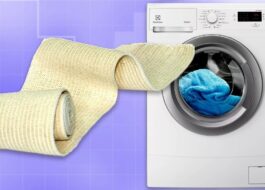
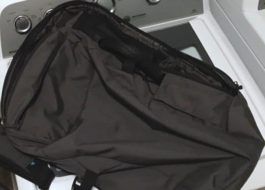
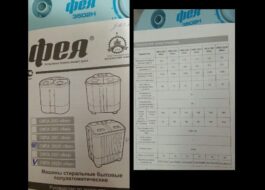


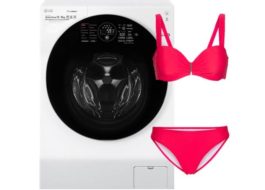










Add a comment